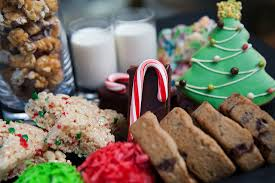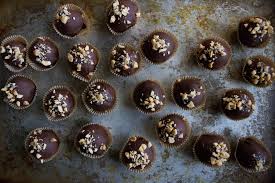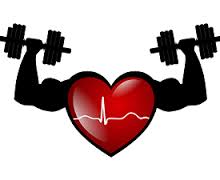Archive | December 2017
QUOTE FOR FRIDAY:
“With the holiday season upon us, food is everywhere. From festive holiday parties to dinners with friends and family, let’s face it, this time of year tends to center around food. And, it is perfectly OK to indulge on occasion, sans the guilt, without gaining weight. The trick is to enjoy what you are eating, and to eat mindfully while avoiding overindulging and gaining weight in the process.”
Dr. Lisa Young (The Blog)
Watch the junk during the holidays!
Junk food is simply in what it states; its JUNK. What is consisted in junk food is either food that is too high in fats, trans fat, high sugar contents=high in calories or high in carbohydrates or high in all of these ingredients are present. Also junk food is processed food which is simply this; foods that were processed or refined to make them more consumer-friendly and easier to transport but have been stripped of most — if not all — of their nutrients and fiber along the way. Carbohydrates provide energy for the body, particularly for the brain and the nervous system. An enzyme called amylase (from the liver) that helps break down carbohydrates into blood sugar, or glucose, which the cells of your body absorb for energy (our fuel for the body) that it needs at that time and whatever glucose it doesn’t need at that time we can’t get rid of it as waste but instead it gets stored in the body. Where? Well first the liver but if a large meal or even just a moderate to small meal high in carbs or starches the liver can’t store all that so than it goes to the fat tissue to be stored=weight gain. Remember sugars or calories get broken down to further simple sugars and even some fats depending on its make up. So if sugar is primarily the ending result of what foods are made up of unless fat free food than know the size of the meal plays a part in controlling your weight. Depending on the amount of sugar in the meal your having will determine how much sugar will need to be stored in fat tissue. First the glucose needs to be utilized by the body by all cells and tissues at that time of digestion than with left over glucose that the body doesn’t need to utilize it has to use other compartments to put it in. Second the sugar goes to the liver where it is being used as a storage unit for the remaining sugar in the blood but it can only fill up so much so it’s limited in the amount that can go in it. Than when the liver gets full it than goes into fat tissue storage. So let us review this again; first the meal is digested and sugar will be dumped in the blood stream where the cells pick up the glucose and deliver it to all tissues that need there fuel=glucose, for at that time. 2ND step is the extra sugar gets stored in the liver than 3rd the extra sugar that can’t be stored in the liver when that organ reaches its max level of storage that it can fit in it in that goes to the fat tissue where that rest of the sugar gets stored=fat deposit in our body. So determined by the size or the portion of the meal you have takes part in determining how healthy it is. If it is fast food than consider it unhealthy especially if fried (no healthy energy). So what is the answer here if you want to look good and eat fast foods at times (from pizza to buffalo wings to onion rings) you have to eat that way in moderation which is saying do this occasionally. If you are in your body mass index weight range with exercising on a regular basis than your even ok to eat fast food 2 times a week but if you eat this food constantly your still building up risk factors to prone yourself to cardiac disease, diabetes, stroke, hypertension, to cancers.
If you don’t know your BMR than Calculate Your BMR
Basal Metabolic Rate Calculator – Free From Fitness® Magazine
Examples
Examples of processed carbohydrates include most baked goods, white breads, pastas, snack foods, candies and non-diet soft drinks. Other examples of processed carbohydrates are bleached, enriched wheat flour and white sugar. Because these foods have been stripped of their nutrients and fiber, they are often referred to as “empty calories.”
Effect on Health
As our bodies try to digest the huge amounts of starches and simple sugars in a meal that is dominated by processed carbohydrates, hormone production, such as that of insulin, fluctuates dramatically. This causes blood glucose levels to experience spikes and dips, a situation that may increase the risk of developing chronic illnesses such as obesity, diabetes, cancer and heart disease. In addition, our bodies are ill-equipped to handle the array of artificial flavorings, colorings and preservatives that are frequently part of the processing of refined carbohydrates. Know when your glucose levels dip rather than stay at a steady rate by eating 5 to 6 HEALTHY meals a day with one being lean in meat and green in vegetables you put yourself at risk of putting obesity on. When you eat 5 to 6 small healthy meals a day this won’t allow your sugar to spike and dip causing excess of glucose that doesn’t need to be utilized by the body to store in the liver to freely floating in the blood stream that gets dumped into fat tissue that will cause weight gain by storing it in your fat tissue. If you regularly eat only 3 meals a day you cause the spike and dip of glucose putting yourself at high risk for this to occur in you, unless you have a high metabolism naturally.
Alternatives
Instead of getting your carbohydrates from processed or refined foods, choose to get your carbohydrates from foods like beans, legumes, whole-wheat bread, brown rice, whole-grain pasta and other grains that may be unfamiliar to you, such as quinoa, whole oats and bulgur. These alternatives are becoming easier to find in mainstream grocery stores. Not only will these sources of carbohydrates help to protect you from a range of chronic diseases, but they will also make your meals more enjoyable and interesting.
Need assistance to reach this kind of an eating pattern with learning more about HEALTHY foods for the body that you should be eating out of the 4 food groups (that includes each group letting you know what is lean, leaner, and leanest)? I found a M.D. who wrote a book that was very helpful. His name is Dr. Anderson with his book “Dr. A’s healthy habits”. His book helps you learn how to eat healthy in aiding you to develop healthier habits in your lifestyle forever not just diet for 3 or 6 or 12 months than put the weight all back on again. You learn about all the choices in what you want regarding foods, drinks, snacks and desserts or just learn about healthy foods through Dr. Anderson’s book to get the knowledge in what healthy dieting and healthy habits are that you make a part of your life. If you want to lose weight or prevent disease or illness in your life and even pass it down to your children to be passed down to further generations this is the a good pathway to follow. You reach that goal through learning proper healthy dieting, healthy habits and exercise with balancing it with rest. Hope I have helped you in someway and have given you another aspect of how to look at your health including your friends and family. For if we all thought this way, fast food businesses wouldn’t be the number one place in restaurant industry but at the bottom with our health care system better for all in our society as a whole showing a lot less disease/illness (since a lot of cardiac, obesity, diabetes II, and some cancers with more diseases are self inflicted due to our dieting and activity level of many American citizens.). We can make a change and our society has done so before. As the old saying history repeats itself time and time again, so can our society for the better of everyone. If only excess sugar in the bloodstream after eating could leave our system through our kidneys when filtering our blood dumping it in our urinary bladder and when urinating the extra sugar leaves the body or if it was dumped in our GI tract from our bile duct in our intestines and evacuated in our stool no one in the world would be fat. It doesn’t work that way instead it gets stored in our body. Unfortunately after the meal upon digestion sugar gets dumped in the blood, goes around the whole blood stream pathway being utilized by tissue where it’s needed and the extra sugar gets dumped into the liver but when that organ gets full than the left over sugar gets dumped into our fat tissue. This is how getting Obese happens naturally.
QUOTE FOR THURSDAY:
“The holidays often inspire lots of spending. Whether you’re shopping for presents, decorating your home or preparing a large meal, there are different steps you can take to keep your budget on track this holiday season.”
US NEWS (usnews.com)
Part II Holiday or not there are shopping alcoholics, the holiday season & prices makes it easier to do.
The simple fact is during the holiday season it can be difficult to differentiate between normal shoppers and compulsive spenders. For instance, compulsive spenders often experience a feeling of excitement before going shopping, a deep sense of pleasure and gratification while shopping, and a loss of excitement coupled with guilt, shame, and remorse after shopping. It seems highly likely that at least a few non-compulsive holiday shoppers experience the exact same feelings before, during, and after a Black Friday splurge. However, non-compulsive spenders laugh it off and return the unwanted items, no harm done, whereas compulsive spenders will hide their behavior and suffer through intense feelings of guilt, shame, and remorse. And to relieve these feelings, compulsive spenders will self-medicate with yet another round of compulsive spending.
What to Watch Out For
If you’re worried about your holiday shopping (or your spending in general), consider the following. Behaviors associated with compulsive spending include:
• Reacting to disappointment, stress, anger, and other difficult feelings by shopping.
• Feeling euphoria mixed with anxiety while shopping.
• Feeling like you are getting away with something forbidden while shopping.
• Feeling guilt or remorse after shopping.
• Buying things that are never or almost never used.
• Lying about shopping habits to family or friends.
• Feeling that your spending is out of control.
• Feeling that your spending is causing conflict in the family, especially with a spouse or partner.
• Making (but not keeping) promises to curtail or quit shopping.
• Being preoccupied with credit cards and finances.
For compulsive spenders, one out-of-control shopping spree is never enough. Neighborhood malls and Internet shopping sites are magnets, and they can’t stay away. During the holiday season, they purchase and give expensive gifts, not because they are filled with love but because they need an excuse to spend. Like other types of addicts, compulsive spenders lie about and cover up their behavior. They learn to shop in secret, often online. They hide purchased goods, price tags, and receipts. Sometimes they even destroy their purchases in an attempt to conceal their spending. And their finances are nearly always strained, often past the breaking point.
Sadly, what compulsive spenders are actually attempting to purchase is happiness. They want to be liked and admired and to not feel depressed or anxious. It doesn’t matter how much money spending addicts have or how successful they are; they feel empty inside, and they use shopping to fill the emotional void.
If you recognize any of the aforementioned thoughts, feelings, and behaviors in relation to your holiday (or everyday) spending, you may want to take a deeper look at your purchasing habits. The good news is if you think you have a problem, plenty of help is available. Many certified addiction therapists have experience treating compulsive spending, and there are several 12-step self-help groups, such as Debtors Anonymous and Shopaholics Anonymous, where you can find nonjudgmental support and good, constructive advice. There are even some indications that psychiatric medications can help with this and related compulsive disorders.
Remember, the consequences of compulsive spending usually persist long after a spree. The financial strain can be devastating, but other consequences can be just as troubling, if not more so. The stress of addiction can take a toll on marriages, friendships, careers, and even the compulsive spender’s physical health. Without treatment, compulsive spenders can eventually destroy everything they hold dear.
David Sack, M.D., is board-certified in addiction psychiatry and addiction medicine. As CEO of Elements Behavioral Health he oversees a network of addiction treatment centers that include Promises Treatment Centers, The Ranch outside Nashville, The Recovery Place drug rehab in Florida, and Texas rehabs Right Step and Spirit Lodge.
QUOTE FOR WEDNESDAY:
“Most stores are carefully engineered to get you to overspend. Particularly during the last month of the year, they’ll tug on your emotions with holiday cheer and load the checkout aisle with tempting holiday delights.”
Emmie Martin (The Blog)
QUOTE FOR TUESDAY:
“Take steps to be safe during winter storms and extreme cold. Stay indoors during the storm, Dress for the weather, Wear a hat, hood, or scarf, as most heat is lost through the head. Wear layers, as they provide better insulation and warmth. Keep fingertips, earlobes, and noses covered if you go outside. Keep clothing dry; if a layer becomes wet, remove it.Recognize the signs and symptoms of frostbite and hypothermia but keep the heart pumping in the cold”
NYC Emergency Management
Snow has hit, stay inside & here are some ideas to get your heart pumping at home!
In winter, bad weather can strike unexpectedly, causing roads to be iced over and snowy. But staying safe at home doesn’t mean you must give up being physically active. Here are some ideas to get your heart pumping at home:
- Do some activity with the lungs. You ask how in this terrible cold weather; well here are some tips: Take a couple laps around the living room – you’ll engage your thigh and buttock muscles.
- Try stretching. Stretch your whole body, focusing on legs, then arms, then abdomen and back having music on or wathing T.V.
- Do pushups and crunches. Do three sets of 10 each while watching a movie or listening to music. Before you know it, you’ll be done!
- Climb up and down stairs. Start by climbing one step at a time, then move up to two.
- Enjoy workout videos. Check the Web, websites stream workout videos that you can watch for free.
- Play holiday charades. Get the whole family involved with a holiday themed game of charades or if passed the holidays do regular charades based on average similar likes from TV to foods to movies, etc… Use characters like reindeer (gallop), Santa (riding his sleigh) or elves (working in the toy shop). Act out.
Ward Off the Sniffles by doing the following:
Cover a cough or sneeze with a tissue instead of your hand. Remember to throw your tissue away and wash your hands with soap and water or an alcohol-based sanitizer.
- Wash your hands. This is one of the best ways to avoid catching a cold or giving one to someone else.
- Drink up! Be sure to stay hydrated; drink plenty of water is what I mean by drink up.
- Get some shut-eye. Stay a step ahead of illness by getting plenty of sleep (about eight hours a night). You’ll see a difference for I surely do when I can get 8 hours sleep.
QUOTE FOR THE WEEKEND:
“Remember the 2-Hour Rule: Discard any perishables left out at room temperature for more than 2 hours, unless you’re keeping it hot or cold.”
FDA
QUOTE FOR FRIDAY:
“As millions take to the roads and skies leading up to Christmas, rainstorms will drench the East as snowstorms plunge across the West. According to the American Automobile Association (AAA), one in three Americans will take a trip during the holiday season with the number of travelers expected to top 100 million for the first time on record. People traveling by vehicle in the mountains of the West will need to have tire chains on hand. Windshield wipers will get a workout along much of the Pacific coast.”
Accuweather.com






 Stop and Budget!
Stop and Budget!

